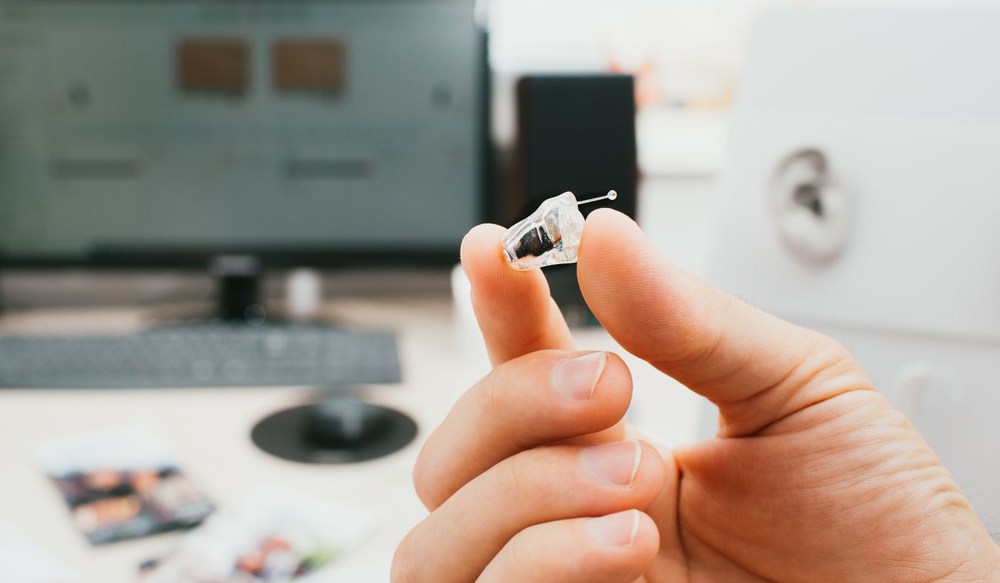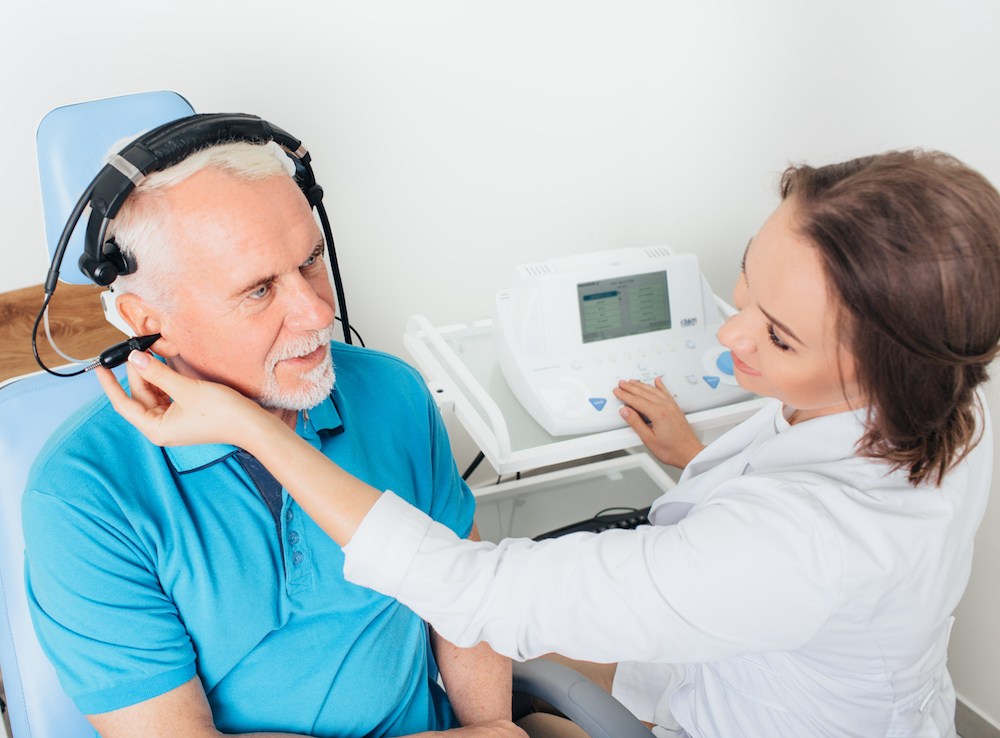How to Advocate for Yourself During a Hearing Test
Scheduling a hearing test is an important part of taking care of your
Celebrating 10 Years of Service!

By: admin | September 25, 2024
Ears are more than just a means of hearing – they’re as unique as fingerprints. Recent research has shown that ears have distinct characteristics that can be used for identification purposes, with the potential to surpass even fingerprints in accuracy. The idea of “earprints” leverages the specific contours and features of the ear, using advanced imaging technology to capture the way light reflects off the ear’s curves. Since the structure of the ear remains largely unchanged from birth and ages naturally, it serves as a reliable identifier throughout life.
In the world of hearing aids, this uniqueness is opening new doors for customization. Earprints are being explored not only for their distinct physical shape but also for their role in capturing how each person hears and processes sound. This emerging technology promises to transform hearing aid design, making it more tailored to the individual’s specific auditory needs. By moving away from generic models, the use of earprints could offer a highly personalized experience, providing hearing aid wearers with improved comfort and sound quality tailored to their own unique hearing profile.
Hearing aids are sophisticated devices designed to amplify sound for individuals with hearing loss, making it easier for them to hear and communicate. They work by capturing sound from the environment, processing it and delivering the amplified sound to the ear. The basic components of a hearing aid include a microphone, amplifier, speaker and battery. Together, these parts work seamlessly to improve the wearer’s ability to hear both speech and surrounding sounds.
When sound enters the microphone, it is converted into electrical signals, which are then sent to the amplifier. The amplifier strengthens these signals based on the wearer’s level of hearing loss, adjusting the volume and clarity of the sounds. After amplification, the processed signals are sent to the speaker, also known as the receiver, which delivers the sound into the ear canal. Most modern hearing aids use digital technology, which allows them to filter out background noise, adjust to different sound environments and even connect wirelessly to other devices. This makes them highly adaptable to each individual’s needs, offering a clearer, more natural hearing experience.
Hearing aids are complex devices, each with its unique features and functions. Just like every individual has unique hearing needs, not every hearing aid is suitable for everyone.
Hearing aids function as high-tech translators. They capture sound waves from your surroundings, convert them into digital signals and then deliver them to your ears in a way that makes sense to you. It’s like having a personal translator who knows exactly how you understand language and adjusts their translations accordingly.
While there are many types of hearing aids available, they all share the same objective – to help you hear better. Just like different types of vehicles are designed for various terrains but all aimed at transporting you from one place to another, each type of hearing aid is designed to meet specific needs but ultimately aims at improving your ability to hear and understand sounds around you.
Despite significant advancements in recent years, there are still some areas where hearing aids can be improved. One of these areas is background noise. Traditional hearing aids often amplify all sounds, making it difficult for you to focus on what you want to hear.
We know how frustrating it can be when you’re trying to have a conversation in a noisy environment and your hearing aid isn’t able to filter out the background noise. This is one of the limitations of traditional hearing devices – they don’t always provide the clarity you need in different situations. However, it’s important to remember that every technology has its limitations and these issues are continually being addressed by hearing health professionals worldwide.
The concept of earprints goes beyond just the unique shape of your ears. It also includes how you individually perceive and interpret sounds. This approach is transforming the way hearing aids are designed and personalized.
Instead of a generic solution, this innovative method tailors each device to a person’s specific earprint. It may seem like a futuristic idea now, but gaining an understanding of this breakthrough could be crucial for keeping up with future progress in hearing health care.
The science behind earprints and sound perception is a combination of biology, acoustics and technology that aims to make hearing aids more effective for each individual. This approach takes into account how your brain processes sound and how this differs from person to person. The goal is to develop hearing aids that can adapt to your unique way of hearing, providing you with a more natural and comfortable listening experience. This is a significant step forward in the field of hearing health care, moving us closer to truly personalized solutions.
In addition to this, there’s another exciting development in the world of hearing health: the use of AI technology in hearing aids. By learning and adapting to your listening preferences over time, these smart devices promise even greater customization and convenience for users in the future.
The world of hearing aids is about to take a significant leap forward, thanks to the concept of earprints. One issue you might face with traditional hearing aids is their inability to filter out background noise effectively. The solution lies in earprints, which provide a more personalized approach. By tailoring each device to your unique way of hearing, it can help you focus on what you want to hear, reducing the impact of unwanted noise. This innovation could be the key to improving your hearing experience in various environments.
Creating a customized earprint is a detailed process. This process involves understanding your unique hearing profile and then using this information to fine-tune your hearing aid. Here’s how it works:
As we continue our discussion, let’s compare traditional hearing aids with earprint-based devices. Both have their strengths and weaknesses that are worth considering.
Traditional hearing aids have been around for a long time and are proven to be effective. They can amplify sounds, making it easier for you to hear. However, they often struggle with background noise, which can make conversations in noisy environments difficult.
On the other hand, earprint-based devices offer a more personalized approach. They take into account your unique way of hearing and adjust accordingly. This can result in a more natural listening experience. But keep in mind that this technology is still new and may need further refinement before it reaches its full potential.
As with any new technology, there are challenges to be faced when incorporating earprint technology into hearing aids. While the potential benefits are exciting, it’s important to acknowledge the hurdles that need to be overcome.
One significant hurdle is the complexity of accurately capturing and interpreting an individual’s earprint. This process involves not only understanding the physical structure of your ears but also how you perceive and interpret sounds. It requires advanced technology and a deep understanding of acoustics, which can make it more difficult and costly than traditional methods.
Another challenge lies in educating both hearing health professionals and users about this new technology. It’s one thing to develop an innovative solution; it’s another thing entirely to ensure that everyone understands how it works and its potential benefits. This requires clear communication, training and patience as everyone adjusts to this new approach.
Despite these challenges, the potential advantages of earprint technology make it a promising avenue for future development in hearing health care. With continued research and refinement, we could soon see a time when every hearing aid is as unique as the person wearing it – providing a truly personalized listening experience.
As we consider the future of hearing aids, the shift towards earprint-based devices is an exciting prospect. This innovative technology could redefine how you experience sound and improve your overall quality of life.
Earprints could bring a new level of personalization to hearing aid technology, offering benefits that go beyond traditional customization methods. By capturing the unique shape and structure of your ear, earprints would allow hearing aids to be tailored specifically to your anatomy, improving both fit and sound delivery. This ensures that the device sits comfortably and securely in your ear, while also optimizing how sound is channeled into the ear canal, minimizing issues like feedback and distortion.
In addition to a more secure fit, earprints could also refine how hearing aids process sounds. Everyone’s ear anatomy plays a role in how they hear and interpret sounds, and using earprints could allow hearing aids to be calibrated to your specific hearing needs. This could result in more accurate sound reproduction, improving clarity and making it easier to hear conversations and environmental sounds in different settings. By integrating earprints into hearing aid technology, future devices could deliver a level of customization that enhances both comfort and hearing performance, helping wearers get the most out of their hearing aids.
We understand how important it is to find a device that fits seamlessly into your life. That’s why tailoring devices to your unique way of interpreting sounds is an exciting prospect that holds great promise for enhancing how we manage hearing loss.
At Hear More Medical Centers of America, we are committed to staying at the forefront of these advancements, ensuring our patients have access to the latest in hearing health care. We understand each person’s earprint is distinct and believe in providing personalized care tailored to your specific needs.
If you’re intrigued by the potential benefits of custom devices or have any questions about your current hearing aid options, we encourage you to reach out by calling (352) 877-9243 to schedule an appointment at one of our convenient locations in The Villages, Ocala or Summerfield, FL.

Scheduling a hearing test is an important part of taking care of your
By: admin | October 20, 2025

Your hearing aids are built to handle daily wear and keep up with your
By: admin | September 24, 2025

The workplace demands constant communication – team meetings, client
By: admin | May 23, 2025
